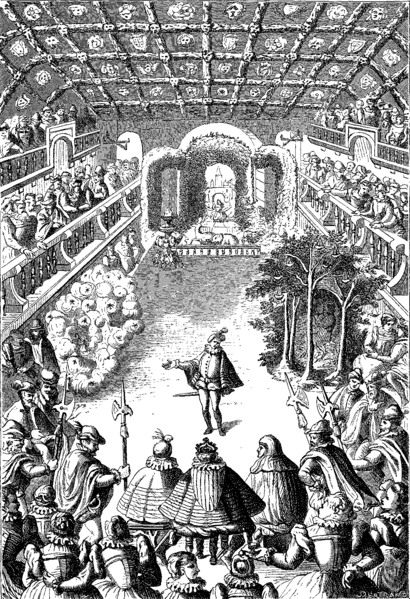RENAISSANCE DANCE
Renaissance – Italy and France
Ballet originated in the Renaissancecourtas an outgrowth of court pageantry in Italy, where aristocratic weddings were lavish celebrations. Tutus,ballet slippers and pointe work were not yet used. The choreography was adapted from court dance steps. Performers dressed in fashions of the times. For women that meant formal gowns that covered their legs to the ankle. Early ballet was participatory, with the audience joining the dance towards the end, ballet slippers and pointe work were not yet used.
.

Basic article: Renaissance dance
Engraving of the second scene of the Ballet Comique de la Reine, staged in Paris in 1581 for the French court
Domenico da Piacenza (c. 1400–c. 1470) was one of the first dancing masters. Along with his students, Antonio Cornazzano and Guglielmo Ebreo da Pesaro, he was trained in dance and responsible for teaching nobles the art. Da Piacenza left one work: De arte saltandi et choreus ducendi (On the art of dancing and conducting dances), which was put together by his students.
In 1489, Galeazzo, Duke of Milan, married Isabella of Aragon in Tortona. An elaborate dance entertainment was arranged for the celebrations by the Italian dance master Bergonzio di Botta. The dances were linked by a slim narrative concerning Jason and the Argonauts, and each corresponded to a different course for the dinner. Tristano Calco of Milan wrote about the event, and it was considered so impressive, that many similar spectacles were organized elsewhere.
Ballet was further shaped by the French ballet de cour, which consisted of social dances performed by the nobility in tandem with music, speech, verse, song, pageant, decor and costume.
When Catherine de’ Medici, an Italian aristocrat with an interest in the arts, married the French crown heir Henry II, she brought her enthusiasm for dance to France and provided financial support. Catherine’s glittering entertainments supported the aims of court politics and usually were organized around mythological themes. The first ballet de cour was the Ballet de Polonais. This Ballet was performed in 1573 on the occasion of the visit of the Polish Ambassador. It was choreographed by Balthasar de Beaujoyeulx and featured an hour-long dance for sixteen women, each representing a French province.

